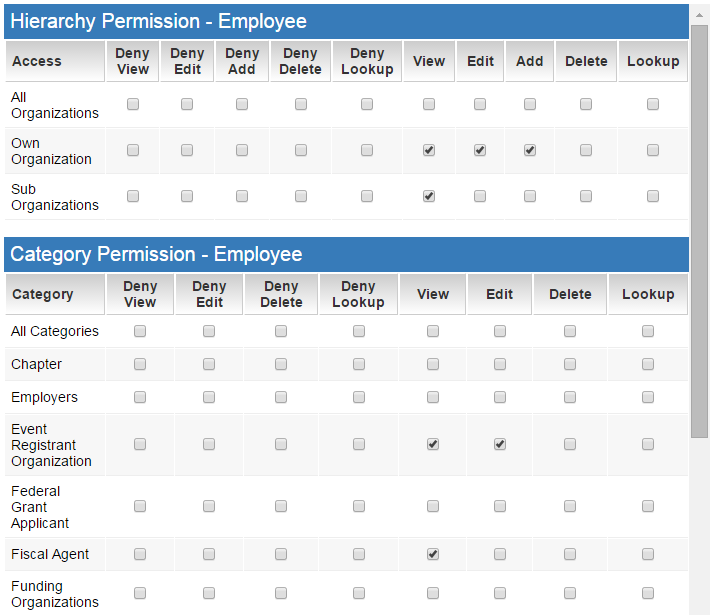Company and User Security Matrix
From SmartWiki

|
This article will explain how you can implement this feature for use on your SmartSimple system. |
Contents
Overview
Enabling the Company and User Matrix
Note: You will need Global User Administrator Privileges to enable and configure this feature
- In the Configuration menu, Click on Global Settings
- Under the Security Tab, add a check mark to the box Enable Company and User Security Matrix
- Click Save
Configuring the User Security Matrix
- In the Configuration menu, click on Global Settings
- Under the Security Tab, click on the User Security Matrix
- Under the Login User Role select the user role you will be permissioning
- First set Hierarchy Permissions if applicable - This sets what general permissions a specific user role has to view and modify based on the following options
- Users Under All Organizations - access to all users under all organizations
- Users Under their Own Organization - access to those users found under the current users organization
- Users Under Sub Organizations - access to those users found under the current users organization or its sub-organizations
- Own Profile - access to users own profile
- Set Roles Permissions if applicable - This sets the granular role-by-role permissions to perform views, edits, deletes, and lookups.
Configuring the Company Security Matrix
- In the Configuration menu, click on Global Settings
- Under the Security Tab, click on the Company Security MatrixThis defines how users can interact with company data
- Under the Login User Role is displayed a list of all defined user roles. Select the user role you will be permissioning
- Set appropriate Hierarchy Permissions if applicable - This sets what general permissions a specific user role has to view and modify organization data that they belong to.
- Options include the ability to view, edit, add, delete, and lookup permissions for All Organizations, their Own Organizations, and their Sub Organizations.
- By adding a check mark to the specific check box in the matrix you will be enabling that permission for the specified user role.
- Set Category Permissions if applicable - This sets granular category-by-category permissions to perform views, edits, deletes, and lookups.
Permission Types
The following 10 permission types are available:
- Deny View - Users in this role are denied access to this item.
- Deny Edit - Users in this role can access but cannot edit.
- Deny Add - Users in this role can access but cannot create a new item.
- Deny Delete - Users in this role can access but cannot delete an existing item.
- Deny Lookup - Users in this role can access but cannot search an existing item.
- View – View the item.
- Add – Create a new item.
- Edit – Edit an existing item.
- Delete – Delete an existing item.
- Lookup – Search an existing item.
Company Security Matrix Example
1. Review the Hierarchy Permission and Category Permission shown below for the Employee Role:
- A. From the Hierarchy Permissions - Employees can View, Edit, and Add data related to their Own Organization.
- B. From the Category Permissions - Employees can View and Edit "Event Registrant Organization" and View "Fiscal Agents".
Notes
- Only a Global User Administrator or a Local User Administrator can define roles.
- When Company or User security matrix is enabled, then the system will ignore any other Company or User specific permissions set for Local User Administrator and basic users.
Also See
Security Matrix
The Key Control Element – Roles
Using Roles
Roles & Permissions

|
Click here to learn why this feature is a benefit to your organization. |
